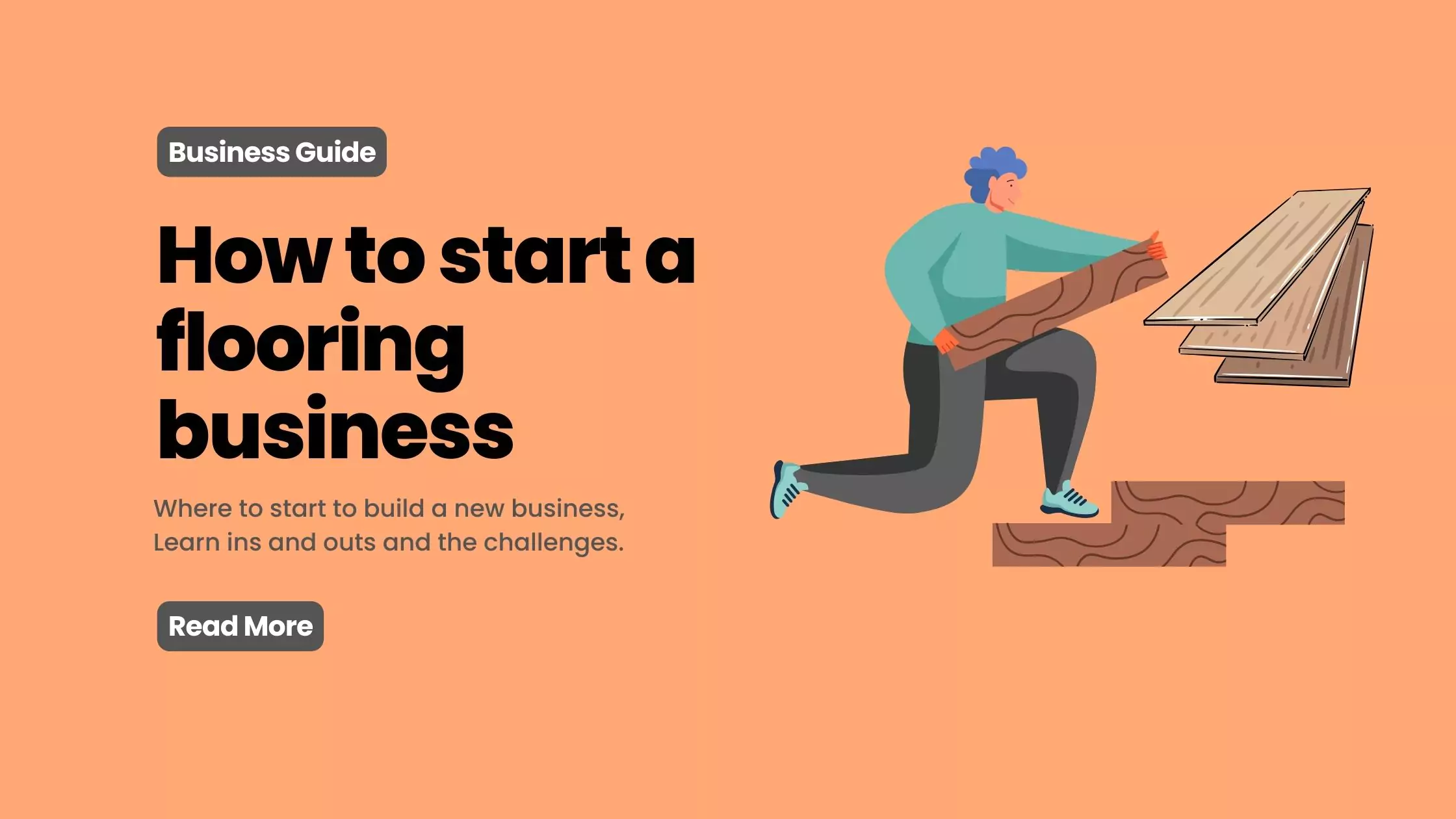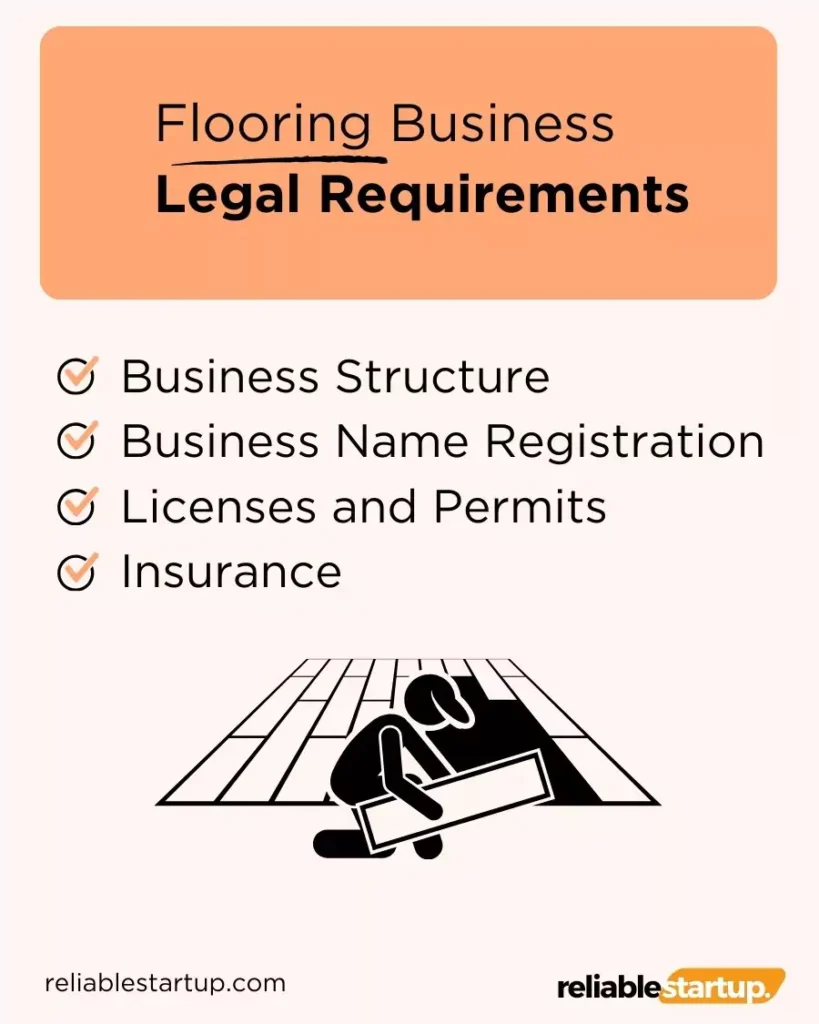How To Start A Flooring Business?

Thinking of starting an evergreen business that will never go away? Here is a suggestion for a business that everyone needs; from offices to homes, and even restaurants everyone needs flooring for their places because it has a major addition to the decor of a place. The needs of everyone can vary like wood flooring, carpet flooring, or tile flooring.
Flooring is one of the decor items where the viewer’s eye first goes. And also it is one of the improvements every homeowner has on his list. So, having a skilled and professional flooring business is always in demand.
Starting a flooring business or any type of business, you must go through challenges and ups and downs. But if you think you are ready to do this, our guide will prove fruitful in your way.
What do I need to start a flooring business?
Starting a flooring business requires careful planning, industry knowledge, and the acquisition of necessary resources. Here’s a comprehensive list of steps and requirements you should consider:
Step 1: Make a Business Plan
One of the best ways to start a successful flooring business is to have clear plans. Yes, I understand, that planning thing is difficult but setting plans of priorities plays a role in clear blueprints. Here are the things you have to do to create the best business plan:
Market Research: Doing the market research makes you clear of the market demand, your target audience, and the gap in your competitors. So, you can easily get the pain points of the customers and produce a product or service around it.
Services Offered: After researching the pain points and gaps, you can decide what services (installation, repair, refinishing, types of flooring materials, etc.). you are going to offer that get the attention of customers.
Business Model: As you decide the services you are going to offer, you are now on the step of selecting the best-suited business model (B2B, B2C, On-demand, Subscription-based) for your business.
Financial Planning: Now you have to make an initial investment and ongoing costs. Also, you have to make a pricing strategy (premium, skimming, value-based, or penetration) and revenue projections.
Step 2: Legal Requirements

You should have to fulfill legal formalities to set yourself as a trusted business in the market. Here are the legal requirements you should accomplish:
Business Structure: Select a business structure in which you’ll operate or the one that best suits your business needs. You can select one of the structures below:
Sole Proprietorship
Partnership
LLC (Limited Liability Company)
Corporation
Business Name Registration: Register your business name with the appropriate state authorities.
Licenses and Permits: Depending on your location, you need specific licenses to operate a flooring business (contractor’s license, business license, etc.).
Insurance: Liability insurance, worker’s compensation (if you have employees), and property insurance if you own a physical location.
Step 3: Financial Setup
Bank Account: Open a business bank account to keep personal and business finances separate and have all the transactions recorded in hand.
Accounting System: Implement an accounting system for managing invoices, expenses, and taxes.
Funding: It’s always wise to have a solid financial plan in place to secure funding whenever required. This could involve exploring different options such as approaching banks for loans, seeking investments from interested parties, or dipping into your savings to fund your venture.
Step 4: Equipment and Supplies
Tools and Equipment: It is important to acquire all the essential tools and equipment needed for the job. This includes:
- Jigsaw
- Rubber Mallet
- Measuring Tape
- Spacers
- Utility Knife
- Tapping Block
- Vinyl Tools
- Hand Tools
Additionally, you will need to secure vehicles such as trucks or vans to transport the tools and equipment to the job site.
Materials: Build strong and long-lasting relationships with suppliers who specialize in different types of flooring materials, such as hardwood, laminate, tile, and others. These relationships are essential to ensure reliable and timely delivery of high-quality materials that meet the customers’ requirements and expectations.
Step 5: Skilled Labor
Hiring: If you plan to hire employees, identify the skills needed and start the recruitment process. Then find the employees who match your Job Description and well worked for your flooring business.
Training: It is crucial to ensure that all the employees in the flooring installation business are trained in the latest and most effective flooring installation techniques, safety protocols, and customer service skills.
Step 6: Marketing and Sales
Branding: Create a unique and consistent visual representation of your business because it can help in establishing a strong brand identity. This can include designing a well-crafted logo that reflects your company’s values and mission, creating professional-looking business cards that provide essential contact information, and developing uniforms that unify your team’s appearance and reinforce your brand’s message.
Online Presence: To establish a strong online presence for your business, it’s essential to create a well-designed website that professionally showcases your work. Additionally, you can leverage the power of social media to attract potential customers and build a community around your brand.
Advertising: If you are looking to advertise your business or services, it might be a good idea to consider local advertising options such as distributing flyers, placing ads in local newspapers, or using online advertising platforms that target your local audience.
Networking: An effective way to expand your business network and connect with potential customers is by joining local business associations or trade groups. These organizations provide an excellent platform for entrepreneurs and business owners to exchange ideas, share experiences, and form valuable partnerships.
Step 7: Operational Processes
Customer Service: To ensure effective communication with customers, it is important to establish a well-defined process for handling inquiries, quotes, and customer feedback. This process should include clear guidelines for receiving and responding to inquiries, providing accurate and timely quotes, and addressing customer feedback promptly and professionally.
Project Management: Implement project management tools or practices to keep jobs on schedule and within budget.
Quality Control: It is important to establish and maintain a robust system that ensures top-notch workmanship and maximizes customer satisfaction.
Step 8: Continuous Learning
Industry Trends: Keep yourself up-to-date and well-informed about the latest advancements in the flooring industry. Learn about the latest flooring materials, advanced technologies, and modern installation techniques to make the most informed decisions for your next flooring project.
Business Skills: Enhance your understanding of how businesses operate, there are a variety of options available to you. One effective way to improve your flooring business knowledge is to enroll in courses that cover key topics such as management, finance, and marketing.
Starting a flooring business can be rewarding, but it requires dedication, planning, and adapting to challenges. Take each step seriously, and seek advice from industry professionals or business advisors to guide you through the process.
What is the cost of starting a flooring business?
You need help finding an actual amount to start a flooring business as prices of things vary and can change with time. But here are some essentials and their costs:
Business Licensing and Registration:
Vary by location by typically a few hundred
Insurance: Ranging from $500 – $1000 per year but it also varies according to the size of the corporation.
Tools: $3500 – $4500
Vehicle: $3000 – $5000
Materials: It depends on the amount of material you are ordering and also on the client’s requirements.
How profitable is a flooring business?
looring typically costs between $5 to $20 per square foot. For these calculations, let’s assume an average cost of $12 per square foot and that the size of each job is approximately 150 square feet. Since the customers will pay for all the materials, the profit margin for your business will be high, around 90%.
In the first year or two of your business, you could complete three jobs per month, which would bring in an annual revenue of $65,000. With a 90% profit margin, the total profit would be around $58,000. As you begin to receive referrals and expand your customer base, you could complete up to six jobs per month. At this stage, you may need to hire hourly workers, which would reduce your profit margin to around 70%. However, with an annual revenue of $130,000, you would still make a great profit of more than $90,000.
FAQs:
Final Thoughts:
Starting a successful flooring business requires careful planning, market research, and a focus on customer service. Key steps include understanding the industry, identifying your target market, offering high-quality flooring options, investing in skilled labor, effective marketing, and leveraging technology for operations. Building strong relationships with suppliers and maintaining a commitment to customer satisfaction is also important. By emphasizing quality, reliability, and innovation, entrepreneurs can establish a reputable flooring business.






